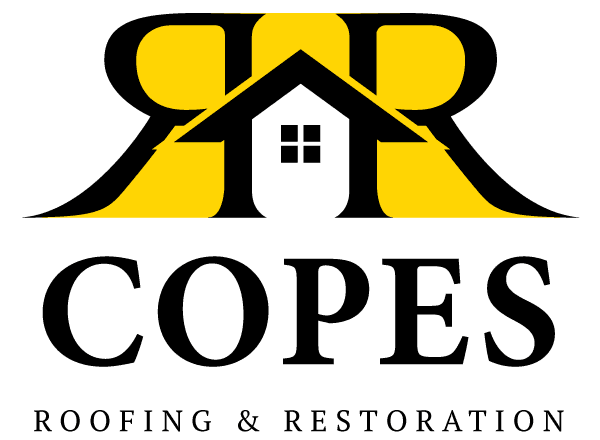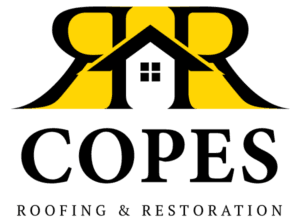When you look at the skyline of any city, you’ll notice a common architectural feature among commercial buildings: flat roofs. This design choice isn’t merely aesthetic but rooted in practical considerations that benefit businesses in numerous ways. From cost-effectiveness to functionality, flat roofing systems offer distinct advantages for commercial properties.
If you’re considering a new commercial roof or repairs to an existing one, understanding these benefits can help inform your decision. Copes R&R Construction specializes in commercial roofing solutions designed to maximize these advantages while meeting your specific business needs.
Understanding Flat Commercial Roofing
Flat Roofs vs Sloped Roofs
The distinction between flat and sloped roofing extends far beyond their visual appearance, with each design offering unique advantages for different applications. Flat commercial roofing costs less due to simpler structural requirements and more efficient material usage. While sloped roofs excel at naturally shedding water and snow through gravity, flat roofs offer superior accessibility for maintenance personnel. This fundamental difference in design philosophy explains why flat roofs have become the standard for commercial construction while sloped roofs remain prevalent in residential applications.
5 Common Types of Flat Commercial Roofing
- Built-Up Roofing (BUR): Often called “tar and gravel” roofs, these systems consist of alternating layers of bitumen and reinforcing fabrics that create a finished membrane, typically topped with stone or gravel for UV protection and ballast.
- EPDM (Ethylene Propylene Diene Monomer): This single-ply synthetic rubber membrane provides exceptional weathering characteristics and resistance to UV radiation, making it one of the longest-lasting flat roofing options available.
- TPO (Thermoplastic Polyolefin): This reflective white single-ply roofing membrane has grown rapidly in popularity due to its energy efficiency, heat-reflective properties, and relatively easy installation process.
- PVC (Polyvinyl Chloride): Known for exceptional chemical and fire resistance, PVC membranes feature hot-air welded seams that create a monolithic, waterproof barrier with excellent durability.
- Green Roof Systems: Incorporating vegetation and growing medium over a waterproofing membrane, these environmentally friendly options provide insulation, stormwater management benefits, and reduced urban heat island effect.
10 Reasons Why Commercial Buildings Have Flat Roofing
Cost-Effectiveness
Flat roofs typically cost less to install than sloped alternatives. This makes them an economical choice for large commercial properties. The simplified design requires fewer materials and less complex structural support. Additionally, the straightforward nature of flat roof installation often means shorter project timelines, allowing businesses to minimize disruption and become operational more quickly.
Maximized Interior Space
With a flat roof design, commercial buildings can utilize the full volume of the structure. This allows for vertical walls from floor to ceiling, creating more usable square footage. For multi-story buildings, this advantage compounds with each level, significantly increasing the total functional area of the property.
HVAC and Equipment Placement
Flat commercial roofing provides the perfect location for housing bulky HVAC systems and other mechanical equipment. This placement improves accessibility for maintenance while keeping noisy equipment away from work areas. The roof also offers convenient routing for ductwork, electrical conduits, and plumbing, creating a dedicated service area that simplifies building operations and maintenance.
Weather Resistance and Durability
Modern commercial roofing materials are engineered specifically for flat applications. They offer excellent resistance to UV radiation, temperature fluctuations, and severe weather. With proper installation and regular maintenance, today’s flat commercial roofing can last 20-30 years, providing excellent long-term value.
Solar Panel Integration
Flat roofs provide ideal surfaces for installing solar panels without the complications of angled mounting systems required on sloped roofs. The unobstructed roof area allows for optimal panel placement and orientation to maximize energy production.
Simplified Maintenance Access
Flat roofs offer safer and easier access for routine inspections and maintenance. Maintenance personnel can walk freely across the surface without specialized safety equipment, resulting in more thorough inspections and quicker repairs. This accessibility reduces maintenance costs over time and encourages more consistent care.
Architectural Design Flexibility
Flat roofing systems provide architects with greater design flexibility when creating commercial spaces. This design approach also simplifies future building expansions, as additions can be seamlessly integrated without complex roof transitions.
Urban Planning Requirements
Many urban areas have building height restrictions or floor-area ratio limitations that make flat roofs the most practical solution for commercial properties. Flat roof designs help maximize allowable building volume while staying within zoning constraints. Additionally, some municipalities offer density bonuses or expedited permitting for buildings with green roof systems.
Additional Usable Space
Flat roofs can serve as valuable additional space for various business purposes beyond equipment placement. Rooftop gardens, employee break areas, event spaces, or even restaurants can transform otherwise unused roof space into productive assets. These amenities can enhance employee satisfaction, create new revenue streams, and increase overall property value.
Improved Fire Safety
Flat commercial roofing demonstrates better fire containment characteristics than those with pitched roofs. The design eliminates attic spaces where fires can spread undetected, while providing firefighters with accessible platforms for combating blazes from above.
6 Common Challenges Seen in Flat Commercial Roofing and Their Solutions
- Poor Drainage: Water pooling can lead to structural damage and leaks over time. Installing tapered insulation systems and ensuring regular drain maintenance prevent standing water issues.
- Membrane Punctures and Tears: Foot traffic and equipment installation can damage roofing membranes. Implement walkway pads and protective barriers around roof-mounted equipment to prevent this common issue.
- Flashing Failures: Inadequate flashing around penetrations and edges is a primary source of leaks. Regular inspection and prompt repair of deteriorated flashing prevent moisture infiltration at these vulnerable points.
- Membrane Shrinkage: Weather exposure can cause some roofing materials to shrink over time, compromising waterproofing integrity. Choosing quality materials with proper expansion allowances during installation prevents this problem.
- Improper Installation: Shortcuts during installation often lead to premature roof failure. Working with certified commercial roofing contractors with proven experience ensures proper application techniques.
- Lack of Maintenance: Neglecting regular inspections allows small issues to develop into major problems. Implementing a scheduled maintenance program with professional inspections twice yearly preserves roof performance and extends service life.
Conclusion
Flat commercial roofing architecture represents a practical solution to the unique challenges of business construction. From cost savings and space utilization to equipment placement and sustainability options, flat roofing systems deliver significant advantages for commercial property owners. Understanding these benefits helps explain why this design choice remains the standard for commercial buildings despite alternatives.
Ready to explore commercial roofing options for your business? Schedule an appointment with Copes R&R Construction today for expert guidance and professional installation services tailored to your specific needs. Visit our Facebook page for more educational content about commercial roofing solutions and to see examples of our quality workmanship.


